Welcome to one of the most active flamenco sites on the Internet. Guests can read most posts but if you want to participate click here to register.
This site is dedicated to the memory of Paco de Lucía, Ron Mitchell, Guy Williams, Linda Elvira, Philip John Lee, Craig Eros, Ben Woods, David Serva and Tom Blackshear who went ahead of us.
We receive 12,200 visitors a month from 200 countries and 1.7 million page impressions a year. To advertise on this site please contact us.
|

|
|
RE: Which scales?
|
You are logged in as Guest
|
|
Users viewing this topic: none
|
|
Login  | |
|

   
Ricardo
Posts: 14801
Joined: Dec. 14 2004
From: Washington DC

|
 RE: Which scales? (in reply to kitarist) RE: Which scales? (in reply to kitarist)
|
|
|
quote:
But in phrygian, the semitones are at I-II and V-VI. Or does it somehow work out in triad chords so it is as if a cadence feel is invariant of the interval-degree spacing relationship underneath?
Semi tones are different again for Aeolian, and further, for Harmonic minor. And so it goes for any and every scale that differs from Ionian. Perhaps what you are getting at is, once they came up with the 12 note chromatic tuning system, why did Ionian mode take on the role as being the basis for tonal harmony? The answer lies in the V7-I relationship itself. The resolution of the tritone was a big part of it. Lydian for example doesn’t work good. A normal Imaj7-IV move you can see why things don’t feel rested on the IV. Dorian almost works, but you must borrow the V7 from D major. Once you start borrowing you notice Aeolian is better served when it borrows like that, hence minor keys in classical music became accepted (resolve two tritones instead of 1, and it’s almost believable!).
Phrygian was not so convincing....however over in Spain, well you know.
Mixolydian ended up working for the blues, but they had to borrow TWO chords.
_____________________________
CD's and transcriptions available here:
www.ricardomarlow.com
|
|
|
|
REPORT THIS POST AS INAPPROPRIATE |
Date Nov. 20 2019 21:15:18
 |
|

   
Ricardo
Posts: 14801
Joined: Dec. 14 2004
From: Washington DC

|
 RE: Which scales? (in reply to kitarist) RE: Which scales? (in reply to kitarist)
|
|
|
quote:
I think I got it. It is the same four pitches (German Aug 6 vs. II dominant 7th), sort of 'enharmonic chords', but they end up serving different harmonic functions depending on what came after it.
Not different functions to me, or Tschaikovsky if you read his quote on the wiki page regarding Aug6 chords. Both he and I assert that the function like a tritone sub, is tonicizing the next chord on its own. Both in flamenco and as per the Schubert example they give. Now whether or not the chord you land on after the Aug6 is viewed as tonic or not is a question of labeling. I’m so glad they put that quote in the wiki page because it legitimizes the idea of harmonic function in flamenco IMO.
Now beni2 is concerned with voice leading, and it’s not really the point of flamenco in classical sense. However when you DO have cante you can analyze the music the same way you would a Bach chorale or whatever, the guitar strings are the other voices. When the singer sings a melody such as the described second line of verse from solea the guitar most often harmonizes with G-C or G7-C por Arriba. So yes that is where you derive the harmony. It evolved this way so even a palo seco singer “hears” the harmony in his head. You can almost see it in their body language that the harmony is changing. It’s the reason we can even do what we did in the cante accompaniment thread.... fill in harmony minus the guitar under the singer.
So add to this concept say “Minera” by chacon or granaina... when the guy sings an E# over a G chord, or A# over the C chord, the Aug6 is created the same way it was in the classical period more or less. Literal “voice” leading was used way the hell back when ever so montoya and everybody’s falsetas simply copy those concepts the best they could. Often the voice leading is in the bass note of the guitar, not like the German Italian or French 6 from classical, but a new harmonic idea that you can put the weird note in the bottom and resolve it up... just like an E7/G#—>Am move. Why it is not done in classical with Aug6 is maybe because there is no aug 6 interval created, and a “voice” using the leading tone is always in the higher register? Regardless I think of this expanded use among others in Flamenco to fit in the euro family of chords and let’s call it spanish 6 for fun.
Anyway as old as these chords are used in flamenco I’m baffled as to why Beni wants to claim voice leading is a unique concept to modern tocares only. In terms of resolving voices on guitar falsetas it is so common to jump from a half step direction up or down to an open string to make a more sustaining sound. To claim the voice leading as in classical music is NOT happening because of these octave jumps or whatever is not fair.
_____________________________
CD's and transcriptions available here:
www.ricardomarlow.com
|
|
|
|
REPORT THIS POST AS INAPPROPRIATE |
Date Nov. 21 2019 12:17:49
 |
|

  
Beni2
Posts: 139
Joined: Apr. 23 2018

|
 RE: Which scales? (in reply to kitarist) RE: Which scales? (in reply to kitarist)
|
|
|
quote:
quote:
Not different functions to me, or Tschaikovsky if you read his quote on the wiki page regarding Aug6 chords. Both he and I assert that the function like a tritone sub, is tonicizing the next chord on its own. Both in flamenco and as per the Schubert example they give. Now whether or not the chord you land on after the Aug6 is viewed as tonic or not is a question of labeling. I’m so glad they put that quote in the wiki page because it legitimizes the idea of harmonic function in flamenco IMO.
Here's the full quote, section 103 on page 108 of Tchaikovsky's "Guide to the Practical Study of Harmony" which is in the public domain and freely available in full (translated into English) from IMSLP ( https://imslp.org/wiki/Guide_to_the_Practical_Study_of_Harmony_%28Tchaikovsky,_Pyotr%29 ).
Dominants and aug6th chords function in very different ways depending on cultural context (i.e. jazz, classical, etc.). To me it is incomplete to think of II as the "dominant" equivalent. Here is why: in minor, ii, iv, and VI can all function as pre-dominant (sub-dominant in Riemann's terms) chords, prepared or altered, and used as cadential material in half-cadences. Likewise, in flamenco, their roman numeral equivalents, v, vii, and II respectively, can function as chords of instability which resolve to the stable E major chord (in E/por arriba) and the effect is enhanced when they are altered. I noted above that the range of notes b-d-f-a-c only need one chromatic alteration to become the family of Aug6th chords [b-d#-f-a-c]. Only one more chromatic alteration is needed (f#) and you get a dominant flat nine [b-d#-f#-a-c].
The true dominant does not function, or almost never functions as a dominant in phrygian tonality. If it does, it is usually when the macho or remate comes along, a true V-I. Usually, if it has a function it is as a neighboring chord, not the dominant. In some soleares (the example I am thinking of is on the Diego Clavel anthology on the first track, I think third letra) the melody descends from "a" (supported by Am) to f# (supported by a second inversion V [f#-a-d#-a-b]. Clavel then moves upward before a descent accompanied by the usual 1-2-3 [Am-G-F] gesture. So the dominant is not functioning as a dominant nor as a substitution.
The dominant and its substitution in jazz work very differently than the II or Aug6 and the true dominant in flamenco. In Jazz F7#11 is the sub for BAlt. Both of these are derived from the F# melodic minor scale [f#-g#-a-b-c#-d#--e#(f).
Limiting the possible voicings to a ninth you get:
F-a-c#-d#-g#, or its substitution
B-d#-f#-a-c#
These are not flamenco chords. My conclusion is that tritone substitutions only work for solo guitar in advanced solo situations. When I say concepts and theories are culturally loaded, this is what I mean: the concept of "tritone sub" in jazz implies the derivation of two dominant chords from the same melodic minor scale.
You could say that aug6 "act like," "function like,""or are similar to" dominant chords but then you have a problem: What about the instances where dm resolves to E, Bhalfdim resolves to E, or F resolves to E. In Flamenco there are multiple cadential possibilities and multiple chords can function as "dominants" (chords with some kind of tension or instability that resolve to the stable tonic triad [or sometimes less stable tonic 7th or ninth).
|
|
|
|
REPORT THIS POST AS INAPPROPRIATE |
Date Nov. 21 2019 19:23:52
 |
|

   
Ricardo
Posts: 14801
Joined: Dec. 14 2004
From: Washington DC

|
 RE: Which scales? (in reply to Beni2) RE: Which scales? (in reply to Beni2)
|
|
|
quote:
The true dominant does not function, or almost never functions as a dominant in phrygian tonality.
BECAUSE, the bII is doing that function, it’s not “incomplete” as you say. And in the macho/cambio applications it is a KEY CHANGE via the “true” dominant. Same as Picardy 3rd in minor. It’s not “true”, it’s a key change.
Your predominant scenario names various chords that precede V in minor or major key. “Instability” chords you say. But when you ALTER them, they are not “instability” chords any more, usually you are creating secondary dominant chords...ie borrowed from a different key in order to tonicize some other chord in your progression. For example ii can be changed to V7/V. But in the case of flamenco your “instability” chords, are not the same ones that correspond to the minor key other than incidentally. Because everything is moving towards your II->I resolution. So for example III could be a “predominant”. Your vii could be pre dominant. VI sure is predominant, coincidentally. All the chords need to eventually take you to II so you can rematar to I. One that sometimes occurs is the “i” chord perhaps moving from vii up, with the goal of II coming up. So you don’t want to call “i” a “predominant” because it’s actually TONIC minor. But that IS how it’s functioning so you must say you have borrowed the ii-iii-IV move from relative major, in order to emphasize the fact you pivot keys between relative major->phrygian via the IV from major or II from phrygian. Fandangos does the same idea except in this case you are only borrowing from relative major, not coming from a previously established major key as is the case with fandangos. Remember to go in the opposite direction (phrygian->relative major), we don’t need a pivot chord, only the V/VI chord ie the V chord in major. This fact points back to II functioning as dominant for the phrygian tonality, plain and simple and “complete”.
The “v” in phrygian is your minor7b5 chord, or half diminished. It’s nature is such that it not only functions as an “almost” Aug6, but it also can be the sub for III7, for II maj7#11, vii (minor 13) and even as tonic sus. But this versatility is also it’s weakness...hence we need to try to spice it up with some more color to give it meaning. And of course abandon it as the dominant to tonic function, just as we do in minor keys with it’s weak v chord.
quote:
The dominant and its substitution in jazz work very differently than the II or Aug6 and the true dominant in flamenco. In Jazz F7#11 is the sub for BAlt. Both of these are derived from the F# melodic minor scale [f#-g#-a-b-c#-d#--e#(f).
Limiting the possible voicings to a ninth you get:
F-a-c#-d#-g#, or its substitution
B-d#-f#-a-c#
These are not flamenco chords. My conclusion is that tritone substitutions only work for solo guitar in advanced solo situations. When I say concepts and theories are culturally loaded, this is what I mean: the concept of "tritone sub" in jazz implies the derivation of two dominant chords from the same melodic minor scale.
I agree “tritone sub” is a loaded jazzy term, I only was using it as another analogy to how the dominant-tonic works in flamenco. But since you brought it up....no you got the same chord used for TWO different scales. Flip the coin over. Super locrian and lydian dominant can switch out. But not only those two, whole tone ALSO works. And other fun stuff. Here is why it’s important to SPELL these chords correctly so when you improvise it doesn’t sound weird. (BD#F#AC# is a darn normal B9 chord, so be careful when you spell these...and both ARE flamenco chords LOL). If I play F7#11 and B7#9#5...both are the same scale C melodic minor. F is Lydian (#4) with only added b7. The idea of the B chord is enharmonic misspellings to trick the ear. It’s really super LOCRIAN, meaning the Bm7b5 (normal locrian) has b4 (maj 3rd), but minor 3rd (#9) and the b13 (#5) was already part of it. But F7b5 and Cb7#11... I would think of Gb melodic minor, for the same spelling reasons in reverse. So the tritone subbing is really about introducing the idea of a weird scale for improvisation, trusting that it “works” ie, doesn’t clash with these altered dominants. So the context of the rest of the song tells you which scale, lydian dominant, or super locrian will be the better choice.
The corresponding “meaning” or elusive example of the tritone sub at work in flamenco....the Taranta (F#) uses these traditional super locrian legato licks based off of the dominant C#. That is D melodic minor... you hear it in those pull offs to open strings. However it’s “tritone sub” concept is it’s really G lydian dominant at work...but the flat 7 is the misspelled leading tone (b4 of super locrian) for key of F#, and we are back at Aug6 chords again. The G super locrian also works, and is the obvious bad choice for Taranta context.
quote:
You could say that aug6 "act like," "function like,""or are similar to" dominant chords but then you have a problem: What about the instances where dm resolves to E, Bhalfdim resolves to E, or F resolves to E. In Flamenco there are multiple cadential possibilities and multiple chords can function as "dominants" (chords with some kind of tension or instability that resolve to the stable tonic triad [or sometimes less stable tonic 7th or ninth).
Simply put, the vii is a WEAKER cadence. Bhalfdim is a crap cadence, as discussed above (like in major try to cadence G triad to Cmaj9 chord lol). F->E works but not strong as F7->E, stronger still is F9-E (montoya examples with melody dropping from G), stronger STILL is F7/D#->E (often done to fix the weak vii->I), and strongest is the F7#11->E with your supporting common tone, not so oddly is the v note just like our happy PACs and such.
_____________________________
CD's and transcriptions available here:
www.ricardomarlow.com
|
|
|
|
REPORT THIS POST AS INAPPROPRIATE |
Date Nov. 22 2019 6:03:17
 |
|

   
Ricardo
Posts: 14801
Joined: Dec. 14 2004
From: Washington DC

|
 RE: Which scales? (in reply to El Burdo) RE: Which scales? (in reply to El Burdo)
|
|
|
quote:
Nonetheless, where are the references to Phrygian key please? I mean real ones, not arguments. I can't find ANY information describing it, beyond its assertion as valid. Where is the wealth of commonly held theory? I'm up for being persuaded. The simplicity of the harmony I hear in old flamenco is just too fantastic and it must tie together somehow. In my A harm min analysis, those simple chords are all present (if the G is added) too.
First of all, you are right to call out the miss spellings Beni made early with alt chord sub. Next, you admit the F7#11 begs resolve and it’s NOT present in your harmonic minor chord scale, yet here we have been pointing out the gazillian examples IN FLAMENCO PROPER of it’s use and function in flamenco. So there it is in black and white exactly what you are missing. And the reason you don’t find proper literature about what’s going on is because flamenco music is a FREAKING DIFFERENT DISCIPLINE!!!! The “wealth of commonly held theory” is locked up in the hands of the maestros and the heads of the cantaores. Folks like me who understand what’s going on working proffesionally in the field, are simply trying to TRANSLATE the concepts to folks like YOU and others that understand the OTHER disciplines (somewhat) with your jazz and tonal harmony books that never get into it. The few individuals that HAVE written about the “theory” behind flamenco harmony, don’t appear to be qualified IMO as they simply keep bringing up or pointing towards the superficial on goings, adding to the common laymen misconceptions, as I SEE IT anyway, having worked in this genre for over 20 years.
Hope that clears it.
_____________________________
CD's and transcriptions available here:
www.ricardomarlow.com
|
|
|
|
REPORT THIS POST AS INAPPROPRIATE |
Date Nov. 22 2019 15:35:09
 |
|

  
Beni2
Posts: 139
Joined: Apr. 23 2018

|
 RE: Which scales? (in reply to Ricardo) RE: Which scales? (in reply to Ricardo)
|
|
|
At this point [actually, a long time ago] it is clear that theoretical discussions require audio, video, or a clear written document with examples from flamenco. This all gets bogged down in "tomatoe/tohmahto," misinterpretation of a post, etc.
For example, I though I was clear that v, vii, and II are the "dominants" in phrygian and that the added d# lend the instability/consonance closer to a dominant. So basically, six chords in phrygian now have a dominant function.
Or that V in phrygian never acts as the dominant until the key change, at which point it is the dominant. Big difference between a dominant chord and a Mm7 that has a different function or a II chord that functions as a dominant.
|
|
|
|
REPORT THIS POST AS INAPPROPRIATE |
Date Nov. 22 2019 16:15:31
 |
|

   
Ricardo
Posts: 14801
Joined: Dec. 14 2004
From: Washington DC

|
 RE: Which scales? (in reply to Beni2) RE: Which scales? (in reply to Beni2)
|
|
|
quote:
Dominants and aug6th chords function in very different ways depending on cultural context (i.e. jazz, classical, etc.). To me it is incomplete to think of II as the "dominant" equivalent.
Well, after all you did state THIS. And it seemed in response to the Tschaikovsky assertion that it’s wrong to think they are different than Dominant function....implied, in ANY context. If you meant to point to Flamenco as the unique example, well, it defeated the purpose of me pointing out the function already existed in SOME few classical minds. The analogous use of Aug6 harmony sort of pertaining to flamenco was the thing I’ve pointed to trying to divert folks thinking it’s only about a modal chord scale (which is simply incomplete or misleading). Then you come along as if only modern tocaores were doing this, as if they were somehow introducing this thing as a MODERN concept, so it seems you want to take us BACK to, or leaving us with only the Andalusian cadence/modal chord scale superficial thing as the explanation of Flamenco harmony since the time before 1970 or whatever the hell you meant.
So the thing not jiving here is folks that either 1.don’t understand classical harmony, but understand jazz and flamenco, or 2. Understand classical harmony but not jazz or flamenco, or 3. Don’t understand any of this stuff completely. My personal frustration is to have to try to teach flamenco in theory terms to folks that don’t understand modes and the circle of 5ths, yet seem to think they do.
_____________________________
CD's and transcriptions available here:
www.ricardomarlow.com
|
|
|
|
REPORT THIS POST AS INAPPROPRIATE |
Date Nov. 22 2019 16:47:49
 |
|

  
Beni2
Posts: 139
Joined: Apr. 23 2018

|
 RE: Which scales? (in reply to Ricardo) RE: Which scales? (in reply to Ricardo)
|
|
|
quote:
Well, after all you did state THIS. And it seemed in response to the Tschaikovsky assertion that it’s wrong to think they are different than Dominant function....implied, in ANY context.
So let's be clear dude. We are in a thread in which Devilhand asked about which scales to learn. He clearly asked about which keys most palos are in. Flamenco is primarily characterized by the phrygian key and phrygian tonality [let's leave aside whether modal practices, melodic or harmonic, play a role for now].
In this context, if I had responded early in the thread, I would have said A good place to begin is with phrygian, phrygian dominant, flamenco octatonic, and major and minor
This thread then went way tangential as they so often do.
So, I am talking about the basic phrygian system as it was practiced from around 1920-1970. This is good ole classic flamenco and even in this fifty year span there are differences in interpretation that can be attributed to individuals, locales or regions, and temporal spans.
quote:
Then you come along as if only modern tocaores were doing this, as if they were somehow introducing this thing as a MODERN concept, so it seems you want to take us BACK to, or leaving us with only the Andalusian cadence/modal chord scale superficial thing as the explanation of Flamenco harmony since the time before 1970 or whatever the hell you meant.
I am not sure what you mean by modal chord scale. Ellis traces the augmented sixth back to the Baroque and notes its special character in regard to phrygian. You might like the book. It will dispel the myth that phrygian tonality is a special invention of flamenco because these cadences existed long ago. The difference between flamenco and some of the musics that used these cadences is that flamenco never lost this special characteristic. The common practice composers in the rest of Europe missed out on exploiting phrygian tonality but they were aware of it. I actually attribute this to those pesky theorists who sometimes prescribed compositional norms.
quote:
My personal frustration is to have to try to teach flamenco in theory terms to folks that don’t understand modes and the circle of 5ths, yet seem to think they do. Who could that be?
Are you talking the basic diatonic circle of fifths, or the chromatic versions that arise through sequencing, voice-leading techniques, etc.
|
|
|
|
REPORT THIS POST AS INAPPROPRIATE |
Date Nov. 22 2019 17:07:44
 |
|

  
Beni2
Posts: 139
Joined: Apr. 23 2018

|
 RE: Which scales? (in reply to El Burdo) RE: Which scales? (in reply to El Burdo)
|
|
|
quote:
Unstable is good, not quite tendency, not quite static. But, by altering what? The 7th? You don't normally 'alter' major chords, you extend them. Don't like your terminology, sorry.
Are you reading the Roman numerals in context? Yes, alter the seventh.
b-d-f-a d-f-a F-a-c-
Alter or add the altered seventh scale degree and v, vii, or II become French, Italian, and German. b-d#-f-a f-a-d# F-a-c-d#
|
|
|
|
REPORT THIS POST AS INAPPROPRIATE |
Date Nov. 22 2019 17:48:53
 |
|

  
Beni2
Posts: 139
Joined: Apr. 23 2018

|
 RE: Which scales? (in reply to Ricardo) RE: Which scales? (in reply to Ricardo)
|
|
|
quote:
The “v” in phrygian is your minor7b5 chord, or half diminished. It’s nature is such that it not only functions as an “almost” Aug6, but it also can be the sub for III7, for II maj7#11, vii (minor 13) and even as tonic sus.
It has no nature. People make music, give it meaning, and do so in social and cultural contexts. Everyone knows the anecdote about the tritone in the middle-ages. Yet, here we are discussing tritones and tritone substitutions and their possible translation to flamenco.
quote:
But this versatility is also it’s weakness...hence we need to try to spice it up with some more color to give it meaning.
Nino Miguel uses it in the opening falseta of his solea very nicely without any spice.
quote:
And of course abandon it as the dominant to tonic function, just as we do in minor keys with it’s weak v chord.
Cadences are gradient in regard to gtheir finality. PACs are used at important points [i.e. section endings or the final] but numerous other cadences bring phrases to a conclusion. Those conclusions are dependent on where the composer wants to go and what s/he wants to say in getting there. There is no need to abandon it; use it or don't but it does not need to be abandoned. I can think of two two-compas falsetas, by Riqueni and Amigo, that us a II-i resolution/cadence in solea. That Em tonic is about as tasty-spicy-cool as you can get. Both use I-II-i and I don't want to mis-cite the second phrase but it ends II-I. I-II-i//x-x-II-I.
|
|
|
|
REPORT THIS POST AS INAPPROPRIATE |
Date Nov. 22 2019 18:16:19
 |
|

   
Ricardo
Posts: 14801
Joined: Dec. 14 2004
From: Washington DC

|
 RE: Which scales? (in reply to Beni2) RE: Which scales? (in reply to Beni2)
|
|
|
quote:
In the basic flamenco phrygian tonal system V cannot and does not substitute for II.
See you got backwards. bII IS the sub for V, and hence creates the “basic flamenco Phrygian tonal system”. But in Jazz, tritone subbing is designed to make a “basic flamenco phrygian tonal system” SOUNDING exotic thing, or something even more exotic if you want hence the choices, INSTEAD of your basic boring V-I tonal lame white boy thing. What you suggested tritone subbing was IMPLYING to do is like telling a jazzer “oh when you see those altered dominants, screw that super loc crap, replace it with good ol V-I in major, a tritone up” LOL Nobody is suggesting this would be a good idea!!! I pointed out already imposing B7#5#9 actually DOES work, because it is the same as F lydian dominant. No harm done to “the basic flamenco phrygian tonal system”.
quote:
I am not sure what you mean by modal chord scale.
The superficial octatonic natural phyrigian dominant hybrid (ie modal) and it’s derived chord scale, or any others folks want to claim as the “basis” of flamenco phrygian forms, which it is NOT.
quote:
Are you talking the basic diatonic circle of fifths, or the chromatic versions that arise through sequencing, voice-leading techniques, etc.
Well the basic one obviously. 
quote:
Nino Miguel uses it in the opening falseta of his solea very nicely without any spice.
As I said, versatile but weak. Impetu uses it to start as well. It’s more like a Isus, as I described.
quote:
That Em tonic is about as tasty-spicy-cool as you can get.
its weak, just as weak as the v-i in minor key. My dancer friend calls it “gay”.  . Anyway, for sure old schoolers balk at such “deceptive cadences” that prefer the old stuff. When I said “abandon” it, I am speaking in terms of the way the “v” is abandoned for the stronger “V” in minor key songs. Not like it’s outcast from society for all eternity . Anyway, for sure old schoolers balk at such “deceptive cadences” that prefer the old stuff. When I said “abandon” it, I am speaking in terms of the way the “v” is abandoned for the stronger “V” in minor key songs. Not like it’s outcast from society for all eternity  
_____________________________
CD's and transcriptions available here:
www.ricardomarlow.com
|
|
|
|
REPORT THIS POST AS INAPPROPRIATE |
Date Nov. 22 2019 18:25:04
 |
|
 New Messages New Messages |
 No New Messages No New Messages |
 Hot Topic w/ New Messages Hot Topic w/ New Messages |
 Hot Topic w/o New Messages Hot Topic w/o New Messages |
 Locked w/ New Messages Locked w/ New Messages |
 Locked w/o New Messages Locked w/o New Messages |
|
 Post New Thread
Post New Thread
 Reply to Message
Reply to Message
 Post New Poll
Post New Poll
 Submit Vote
Submit Vote
 Delete My Own Post
Delete My Own Post
 Delete My Own Thread
Delete My Own Thread
 Rate Posts
Rate Posts
|
|
|
Forum Software powered by ASP Playground Advanced Edition 2.0.5
Copyright © 2000 - 2003 ASPPlayground.NET |
0.140625 secs.
|


 Printable Version
Printable Version







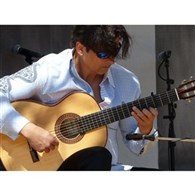
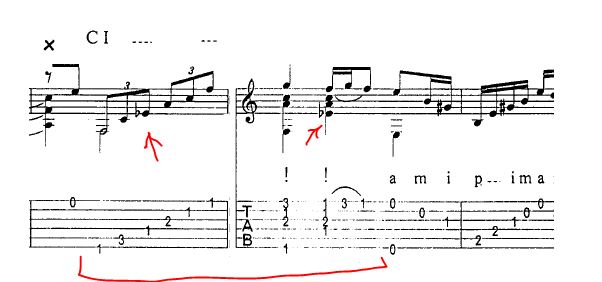

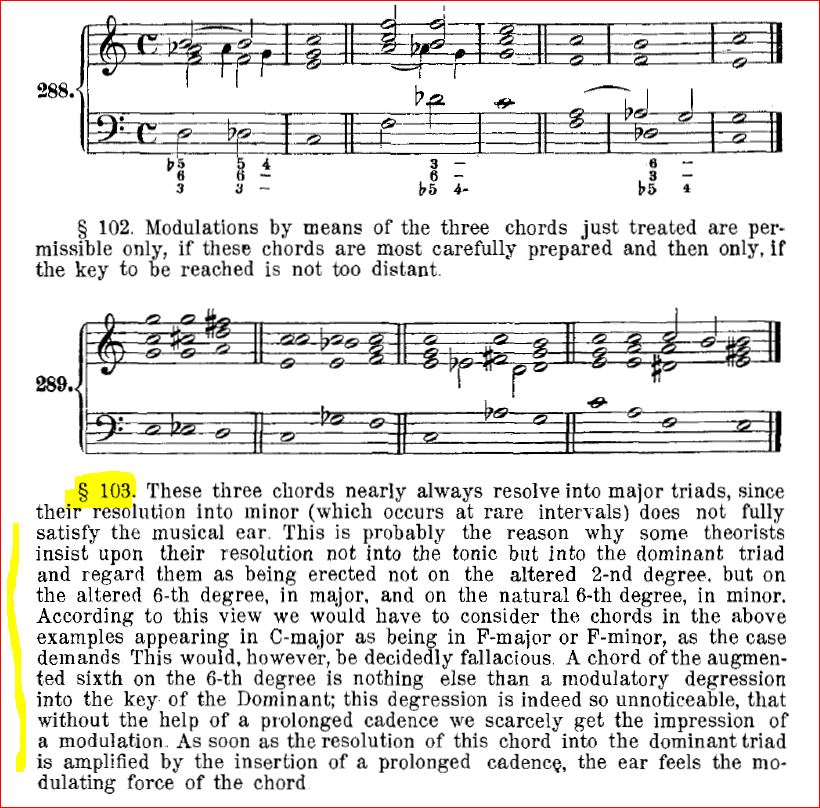
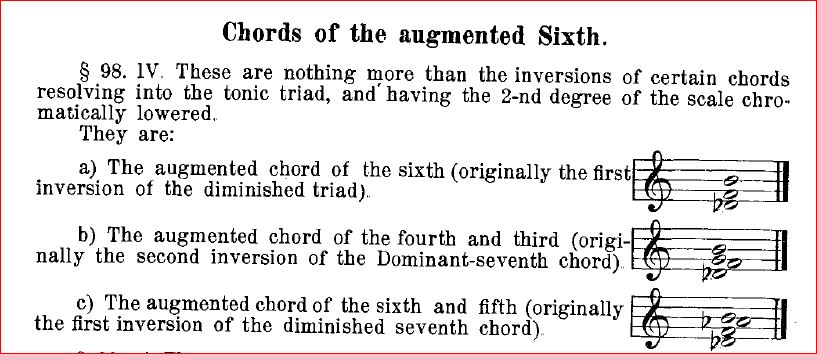
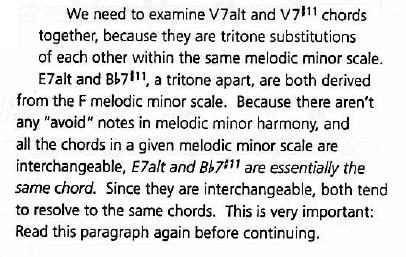


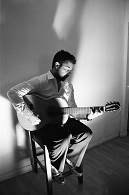


 New Messages
New Messages No New Messages
No New Messages Hot Topic w/ New Messages
Hot Topic w/ New Messages Hot Topic w/o New Messages
Hot Topic w/o New Messages Locked w/ New Messages
Locked w/ New Messages Locked w/o New Messages
Locked w/o New Messages Post New Thread
Post New Thread